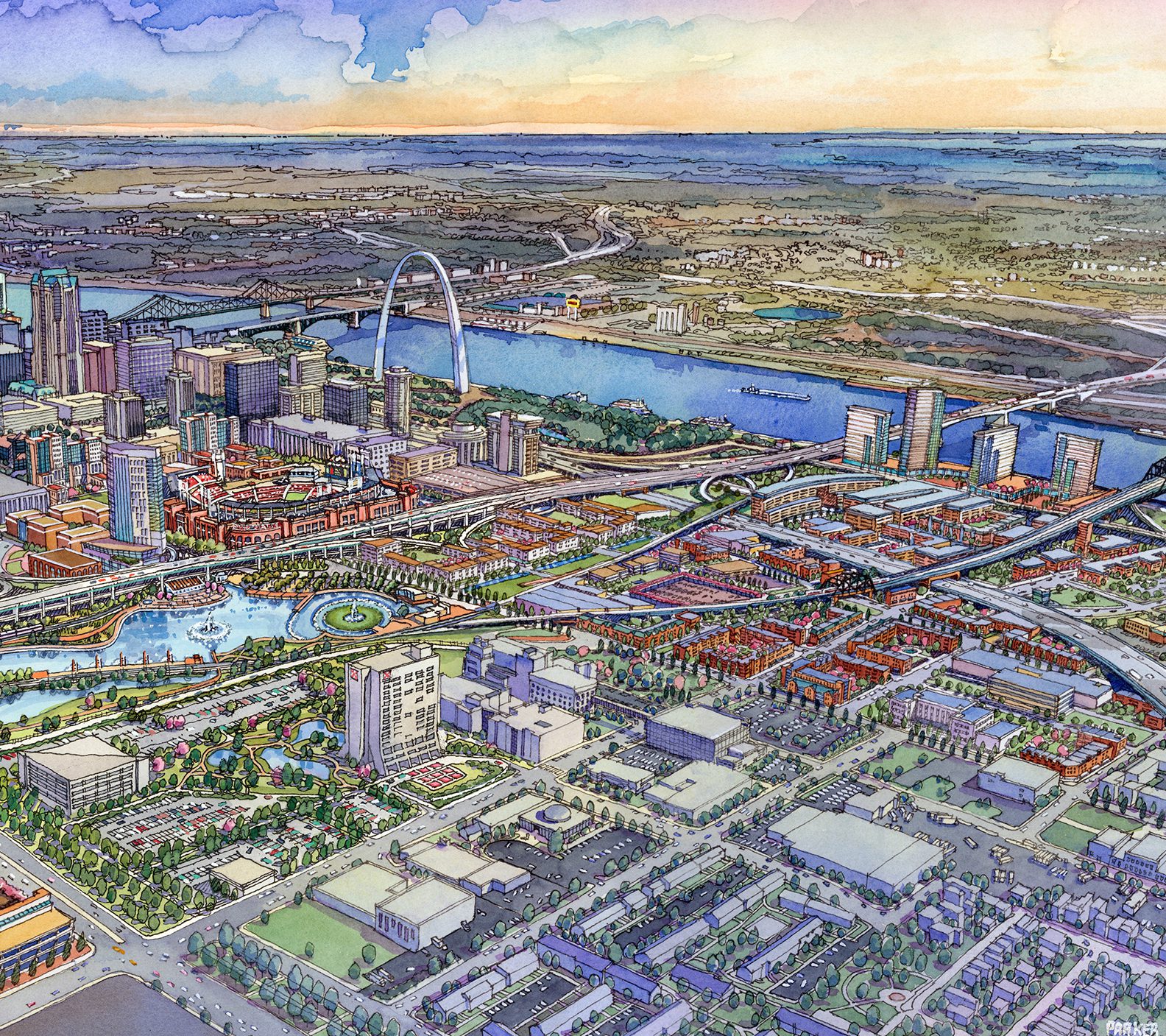Brickline Greenway – FAQs

FREQUENTLY ASKED QUESTIONS
WHAT WE KNOW SO FAR
WE CONTINUE TO LEARN AS THE PROJECT UNFOLDS
WHAT’S THIS ALL ABOUT?
The Brickline Greenway is a major public-private partnership to bring a long-time vision to life. The mission/vision statement explains, “This greenway will transform St. Louis by connecting people and our City’s most treasured places, creating inspiring experiences and equitable opportunities for growth.” More than just a free, accessible trail where people can exercise, commute or explore, the project’s goals include thinking about equitable economic opportunities for everyone to thrive. The greenway aims to create dynamic, active spaces and serve as a regional gathering place that encourages collaboration and boosts civic pride.
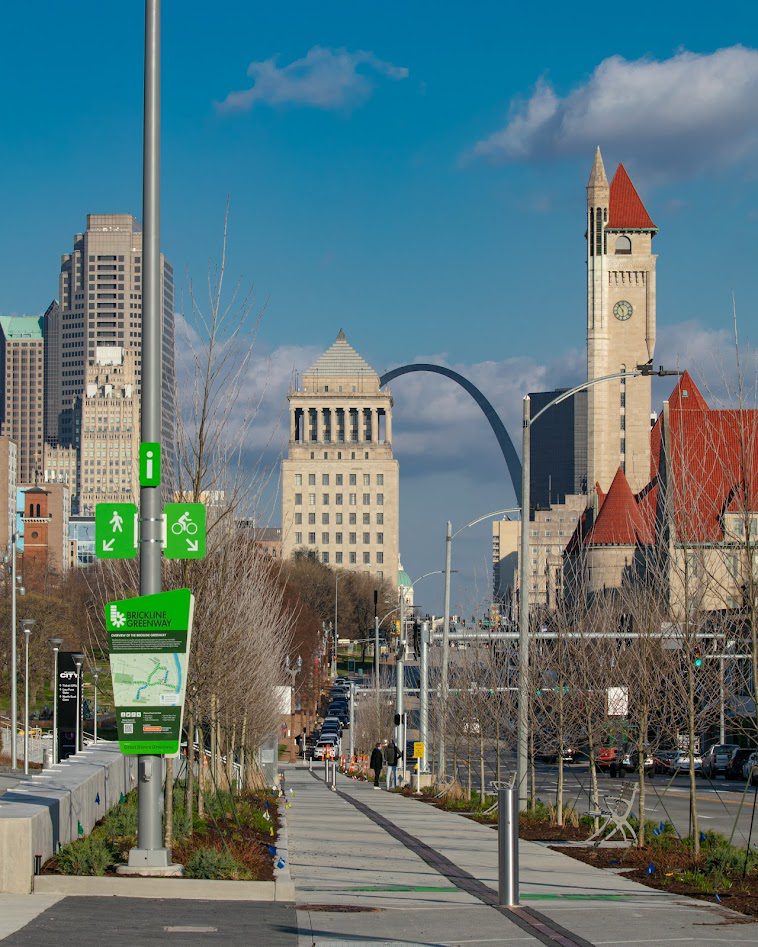
What is the Framework Plan?
The Framework Plan is a “road map” that sets a tone and overall recommendations for the greenway project and process. It presents a refined masterplan for the greenway, outlining a series of potential alignments and signature projects. It also contains information on how the greenway could work and contribute to equitable economic opportunity, what the greenway could look and feel like, and how the greenway can be realized and sustained long-term.
As the project moves forward, this plan will provide the framework to guide decision-making to directly support the mission, key principles and goals. Check out the Brickline Greenway’s Framework Plan – and its summary – on the Process & Team page.
Who contributed to this Framework Plan?
Great Rivers Greenway is the lead agency, but it took many hands to make this happen. 125+ members of a Steering Committee and four Working Groups guided the facilitated process, along with an Artists of Color Council. We interviewed elected officials, went to neighborhood meetings, held open houses and feedback & funfests. The greenway planning team (12+ firms, local and national) contributed their expertise to create this plan. Partners at the City of St. Louis and many organizations served on the committees and groups. Private funders contributed in addition to the local sales tax collected that funds our agency. And of course, our Boards of Directors (Great Rivers Greenway and Great Rivers Greenway Foundation) guided the staff as always.
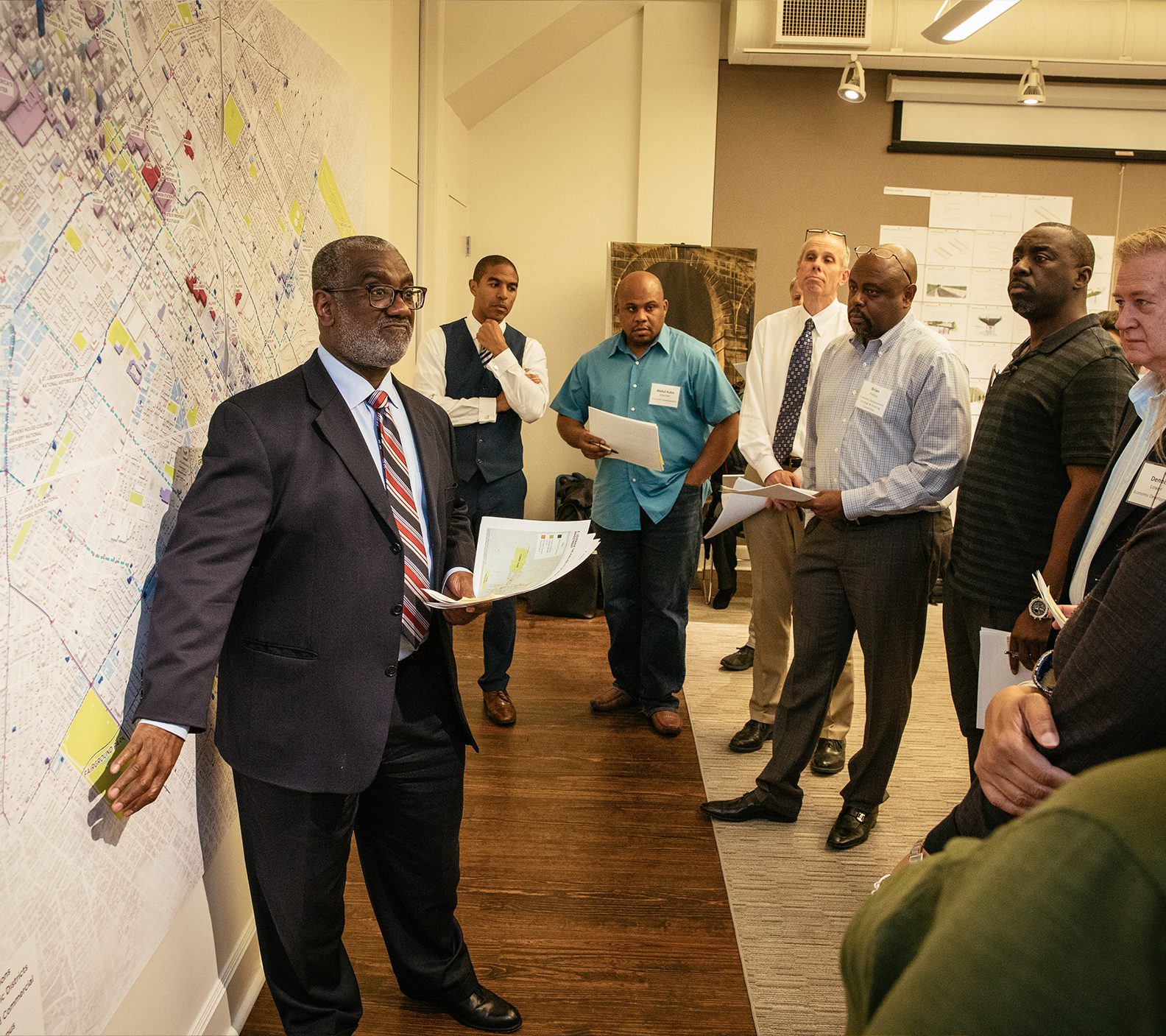

What’s next? When will it be constructed?
Next steps for Great Rivers Greenway and our partners include continuing civic engagement, designing specific greenway segments, exploring public and private funding and governance options, coalition building for the economic development and equity plans as well as coordination with other projects in the city. This is just the beginning! Depending on the engagement, fundraising, technical feasibility and engineering, segments will move through design and into construction as the project unfolds.
This is the estimated timeline for when projects begin construction:
2017: Along MetroLink line from Sarah to Boyle
2022: Market Street from 20th to 22nd
2024: Market Street from 22nd to Compton
2025: Grand Avenue from Natural Bridge to Spring and Page
2026: Along MetroLink line from Grand to Boyle
2027: Spring Avenue from Page to MetroLink line
2027-2030: St. Louis Avenue from Grand to 20th
2027-2030: Market Street from 4th to 20th
2027-2030: Boyle Avenue from Forest Park
2027-2030: From Compton to Grand
This is a long-term project that will not all be done at once, but we’re still determining how many different projects might be moving forward at any given time. Especially given the other developments in the area, this will be a fluid process. We appreciate your patience – and participation – as we navigate the many ways to bring this project to life.


Has any of the greenway already been built?
Currently, there is a two-block section built near the new Cortex MetroLink station between Boyle and Sarah, and another two-block section along Market St. between 20th and 22nd St. in front of CITYPARK, home of St. Louis CITY SC.
How are the routes being chosen?
A set of four criteria for evaluating individual routes/corridors was developed based on 1) technical feasibility (whether space is available); 2) degree of connectivity (including nearby destinations); 3) potential impact (economic, environmental and equity); 4) potential experience (opportunities to create new destinations for people to visit). The evaluation process included qualitative and quantitative measurements of issues that can be tracked precisely, and ones that require dialogue and debate. From these evaluations, we worked with neighborhood residents and stakeholders to determine the routes that will be most successful in achieving the greenway goals.
How will those route choices impact neighborhoods? Do you use eminent domain? What might happen to property values?
Our work is often in public right-of-way, through parks and along streets. That is the case for almost all of the Brickline Greenway. In general, across the region, we work with the willing; we do not have the power of eminent domain. We occasionally acquire property or easements to bring the greenway to life if people are interested in selling or donating. Nationwide, research shows that greenways do make areas more desirable and increase property values. Part of the Framework Plan calls for equitable policies and strategies to ensure affordable housing and benefits to those who live in this area now, while also bringing new opportunities to this area. Goals of the Brickline Greenway Equity and Economic Working Group include leveraging the greenway for new business creation and existing business expansion and supporting partners and current neighborhood residents to spur development and investments in the communities that the greenway connects.
Chris Peoples was selected as Great Rivers Greenway’s first ever Equity + Economic Impact Director to plan and build greenways that bridge neighborhoods and connect communities. He will focus on the Brickline Greenway’s impact on people, power, places and systems through decision-making at every stage in the process.
Learn more in the Brickline Greenway’s Framework Plan – and its summary – on the Process & Team page.
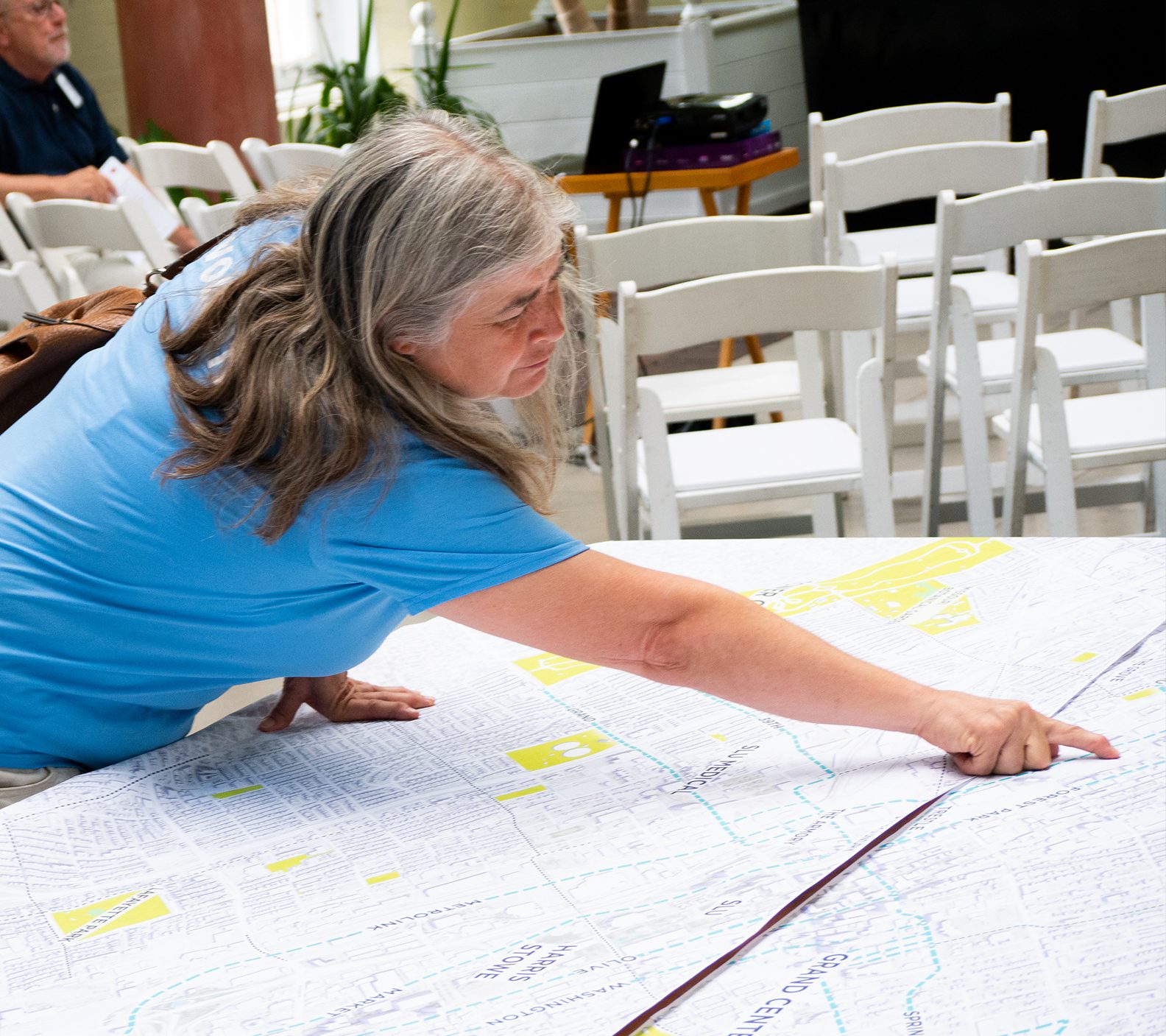
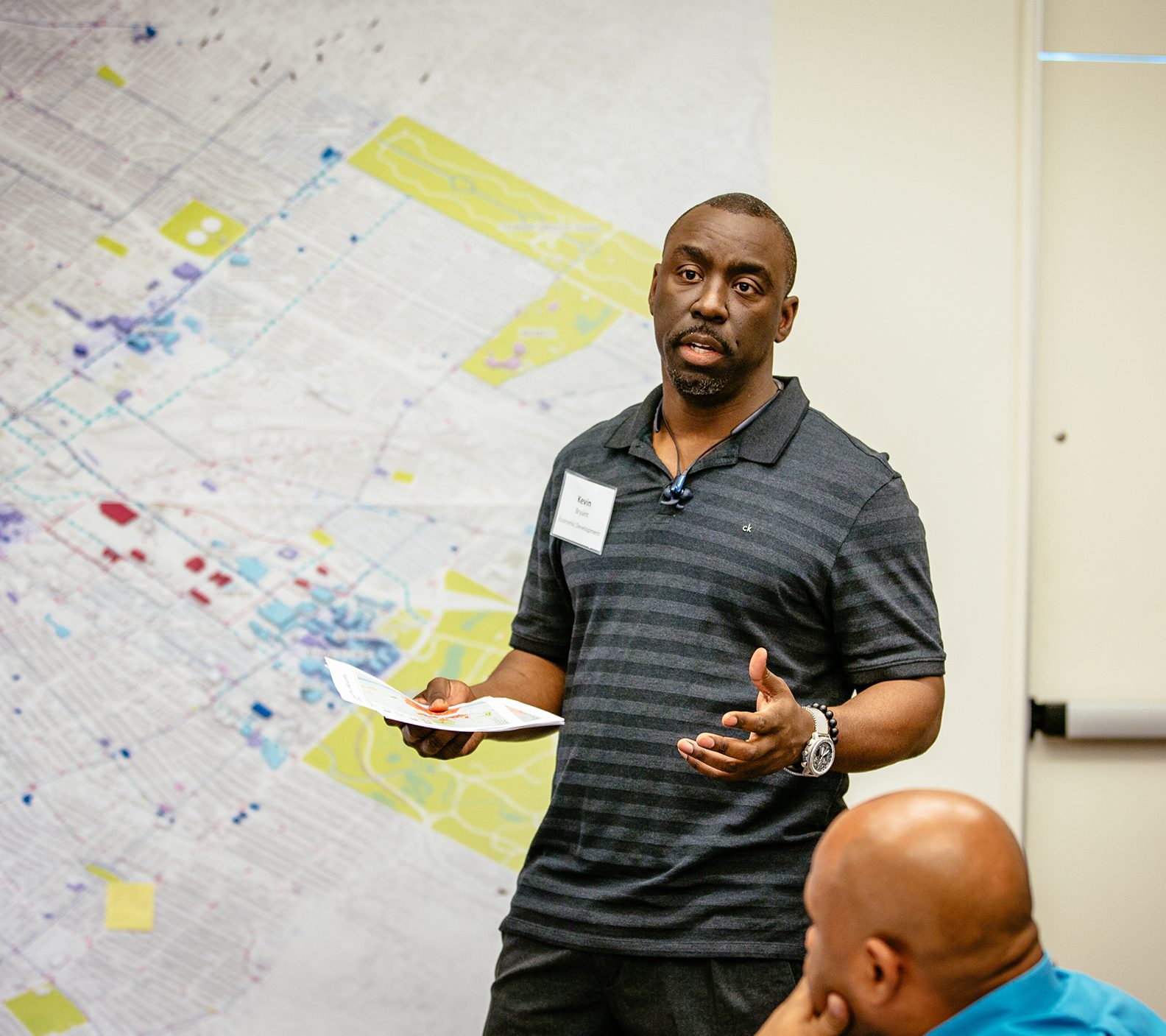
What about other projects in this area?
The Brickline Greenway team is working with the many neighborhoods that the greenway will connect including JeffVanderLou, Covenant Blu – Grand Center, St. Louis Place, Midtown, Central West End, Downtown West, and Downtown. Many of these neighborhoods have plans and projects that we are coordinating with to ensure that we can support each other when possible. Our team coordinates with dozens of other developments or projects to ensure their constructions or impacts are as coordinated and complementary as possible. We’re also collaborating with overall plans like the St. Louis Development Corporation’s Equitable Development Plan.
There are also two partner projects that will connect to the Brickline Greenway:
- – The Tower Grove Connector (led by City of St. Louis and Greater St. Louis, Inc.) will go along Tower Grove Ave and Vandeventer Ave, eventually up Sarah St to the Brickline Greenway.
- – And the 20th Street project, led by the City of St. Louis, will complete the initial loop on the east side of the project.
How much will this cost and how will it be funded for construction and managed long-term?
Brickline Greenway is a major public-private partnership, with an anticipated total cost of $245 million. $15M will be funded through your local sales tax dollars at work from Great Rivers Greenway. $75 million will come from other public funding sources, such as federal or state funds. $155 million will be raised from private, philanthropic donors.
The project has already been awarded several federal grants to fund construction and received private philanthropic dollars. We already have 40% of the overall cost committed, just in these very early stages.
We’re continuing to research various forms of funding and governance for long-term operations and maintenance. We recognize with our partners at the City of St. Louis that we will need to find innovative solutions to take care of the greenway now and for years to come.
How will art be part of this project?
Art can foster a look, feel, personality and soul for the greenway. It provides for expression and dialogue in a changing region and can take many forms like painting, sculpture, architecture, dance, music, theater, poetry, film, photography and more. The arts component of this greenway can provide physical space and opportunity to reflect, learn and grow upon the complex and dynamic history of St. Louis. Through partnerships that invite collaboration between artists and community organizations, prioritization of local and neighborhood artists, and a process that centers community engagement often and early, greenway users and neighbors can feel a sense of ownership, pride and belonging along the greenway.
Art will also seek to engage with and reveal histories of St. Louis, creating a fuller picture of what makes this city unique. These stories include buried histories and racial truths that St. Louisans are ready to confront through courageous dialogue. For example, Pillars of the Valley, a permanent art installation by Damon Davis, was commissioned near the site of the former Mill Creek Valley neighborhood, once home to 20,000 Black St. Louisans in the central corridor, which was demolished in the 1960s in the name of urban renewal. Art can engage with histories like this and create space for healing and community building.
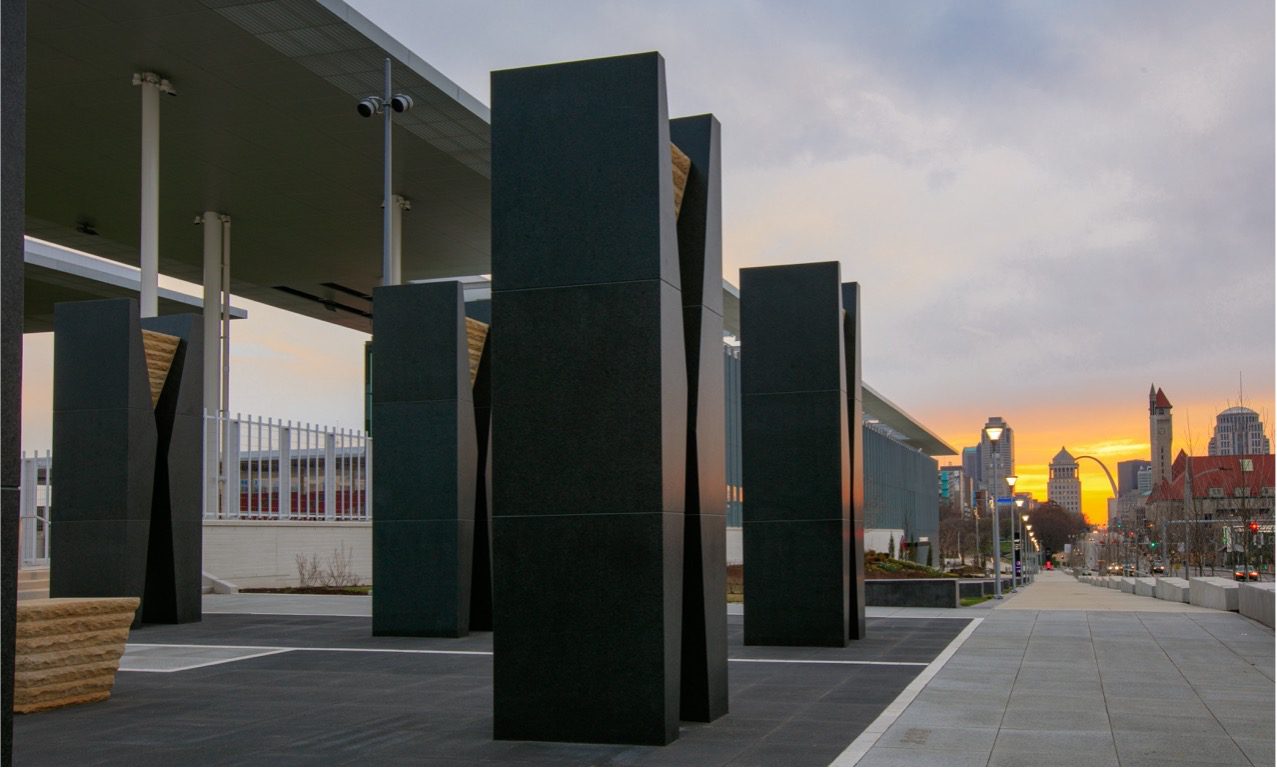
How will this project impact the environment?
The greenway will open an extended network of land for improved ecological function. From green infrastructure and community gardens to new habitat, the opportunity to embed better ecological performance within the greenway landscape is immense. The linear street and greenways have the potential to capture and convey stormwater, enhancing filtration and water quality from adjacent urban sites while also enhancing the urban tree canopy. Vacant lots on the north side of the city have the potential to be converted for both social and ecological uses, reducing stormwater loads in rain gardens, creating native meadows and habitat gardens or growing food for communities. Larger open spaces within the central corridor can convert unused urban space into a public resource that provides diverse landscapes that modify micro-climates and increase surface porosity. While some strategies will be specifically adapted to unique site conditions, the greenway will pursue sustainability that balances ecological improvements with integrated social and educational opportunities.
How is security being addressed?
There are many ways to think about safety. For example, the lighting designer on the project will incorporate security and lighting into the design elements (such as making sure sight lines are clear, avoiding hiding spots) and public art projects that make people feel welcome and invited to be there. In addition, the stakeholders like local neighborhood groups or regional nonprofits will activate the greenway through programming efforts to provide an active, safe, and engaging experience. There are traditional tactics like patrols, greenway guides, emergency call boxes and cameras. The specifics of safety efforts will be developed as the project unfolds with community members and stakeholders and may vary throughout the project’s footprint.
What’s the history of this project and why was it renamed?
Early concepts for “Chouteau” Greenway predate the formation of Great Rivers Greenway. Plans for Chouteau Lake on the southern edge of Downtown St. Louis began taking shape in 1999, under the visionary leadership of McCormack Baron Salazar (MBS). Subsequently, the Chouteau Lake & Greenway Initiative was founded in the early 2000s and MBS engaged the HOK Planning Group, URS, ABNA, Bryan Cave LLP, Development Strategies, Great Rivers Greenway and the U.S. Army Corps of Engineers to develop the Chouteau Lake & Greenway Master Plan.
Partners approached Great Rivers Greenway in 2017 and privately funded an International Design Competition to get ideas from across the globe. Paired with engagement at a local level, the project was reignited and is now in design and construction. A more detailed timeline with key project milestones can be viewed here.
What we are planning today, which evolved through input from the community as part of this process, is so much more than the initial plan for the Chouteau Greenway. You’ve told us that it’s important to build connections to neighborhoods north and south. The greenway will stretch north, south, east, and west to break through real and perceived barriers in the city. The path no longer hugs Chouteau Avenue, the name carries heavy historical weight that’s not aligned with the project values and plus, it can be hard to say and spell.
A new name was chosen in early 2020 through a public call for name ideas based on the following criteria:
- – Specific and unique to St. Louis
- – Fits with a vision for a vibrant, diverse and inclusive future for the region
- – Broad enough to encompass the scope of the project, not just one place or theme
- – Mix of fun and fundamental – should be relatable and meaningful
- – Easy to say, spell and understand
- – Ideally named “____ Greenway” to fit into the existing network in the region
The Artists of Color Council, Steering Committee and Working Groups (including several City of St. Louis department heads), the City of St. Louis and the Great Rivers Greenway Board of Directors all played a role in selecting “Brickline Greenway” from the approximately 600 name ideas that were submitted.
The experience of this greenway will weave you through the heart of our city – no matter which of the many neighborhoods you’re passing through, you’re sure to notice one thing: brick. From the clay mines beneath your feet, this strong, gritty and gorgeous material has literally shaped our city for hundreds of years. It’s a testament to the sturdy, self-made attitude embodied by our city and our people. The renamed “Brickline Greenway” gives visitors an idea of what they’ll see as they explore – the combination of beautiful brick and native Missouri trees and plants. It pays homage to our history and invites everyone to collaborate toward building a more connected St. Louis.
